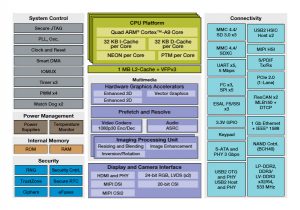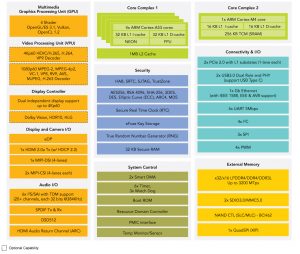Librem 5 Phone Progress Report – The First of Many More to Come!
First, let me apologize for the silence. It was not because we went into hibernation for the winter, but because we were so busy in the initial preparation and planning of a totally new product while simultaneously orienting an entirely new development team. Since we are more settled into place now, we want to change this pattern of silence and provide regular updates. Purism will be giving weekly news update posts regarding the Librem 5 phone project, alternating progress reports on two fronts:
- from the technology development point of view (the hardware, kernel, OS, etc.);
- from the design department (UI+UX), and our collaboration with GNOME and KDE.
To kickoff this new update process, today’s post will discuss the organizational and technological progress of the Librem 5 project since November 2017.
New Team
Just after our successful pre-order crowdfunding campaign (by the way, thank you to all of the backers!) we started to reach out to people who had applied for jobs related to the Librem 5 project. We had well over 100 applicants who showed great passion for the project and had excellent resumes.
Our applicants came from all over the world with some of the most diverse backgrounds I have ever seen. Todd Weaver (CEO) and myself did more than 80 interviews with applicants over a two weeks period. In the end, we had to narrow down to 15 people that we would make offers to; it was with great regret that we had to turn down so many stellar applicants, but we had to make decisions in a timely fashion and unfortunately the budget isn’t unlimited. During the weeks that followed, we negotiated terms with our proposed team members and started to roll new people into the team (with all that involves in an organizational setting). All of the new team members are now on board as of January 2018. They are not yet shown on our team page, but we will add them soon and make an announcement to present all the individuals who have recently joined our team.
As amazing as our community is, we also received applications from individuals who are so enthusiastic about our project that they want to help us as volunteers! We will reach out to them shortly, now that the core team is in place and settled.
There are so many people to thank for the successful jump start of our phone development project! It was amazing for us to see how much energy and interest we were able to spark with our project. We want to give a big thank you to everyone for reaching out to us and we really appreciate every idea and applicant.
CPU / System On Chip

During our early phase we used a NXP i.MX6 SOC (System On Chip) to begin software evaluation, and the results were pretty promising. This was why we listed the i.MX6 in the campaign description. The most important feature of the i.MX6 was that it is one of only a handful of SOCs supported by a highly functional free software GPU driver set, the Etnaviv driver. The Etnaviv driver has been included in the Linux mainline kernel for quite some time and the matching MESA support has evolved nicely. Briefly after our announcement we were contacted by one of the key driving forces behind the Etnaviv development effort which provides us with valuable insight in to this complex topic.

Further work with the i.MX6 showed us that it still uses quite a lot of power so when put under load it would drain a battery quickly, as well as warm up the device.
NXP had been talking about a new family of SOCs, the i.MX8, which would feature a new silicon processor and updated architecture. The release of the i.MX8 had been continuously postponed. Nevertheless, once we realized that the i.MX6 might be too power hungry, the i.MX8 became appealing to us. Hardware prototype operations are always tricky because you have to plan for emerging technologies that you meld with existing parts or materials. Components from original manufacturers sometimes never get released, are discontinued or the availability from the factory grinds to a halt for reasons beyond our control. This is the function of engaging in prototype development so that we can suffer the slings and arrows for you to provide the customer the best possible end product. We have been in active communication with all of our suppliers preparing a development plan that is beneficial for all of us.
At CES in Las Vegas, NXP announced the product release dates for their new SOC, the i.MX8M, along with a set of documentation. This is currently the most likely candidate we will use in the Librem 5. We are very excited about this timely announcement! At Embedded World in Nürnberg, Germany, NXP will announce details and a roadmap. We will be attending and discuss with NXP directly about the i.MX8M for the Librem 5.
We have also decided to use AARCH64, a.k.a. “ARM64”, for the phone software builds as soon as we have i.MX8 hardware. A build server for building ARM64 is now in place and the PureOS development team is beginning to work with the Librem 5 development team on the build process. Adding a second architecture for the FSF endorsed PureOS—that will run on Librem laptops as well as the Librem 5 phone—is a major undertaking that will benefit all future Librem 5 phone development.
Prototype Display for Development Boards
Since the i.MX8 is still not yet easily available, and in order not to unnecessarily slow development progress, we need similar hardware to start developing software. We switched to an i.MX6 Quad Plus board which should provide similar speed for the GPU to what we will find in the i.MX8M. From our contact from the Etnaviv developers we know that they are heavily working on the i.MX8M support so we can expect that Etnaviv will be working on it within the year.
One of the big tasks of our software and design teams, working with our partners (GNOME, KDE, Matrix, Nextcloud, and Monero), will be to create a proper User Interface (UI) and User Experience (UX) for a phone screen. The challenges are that the screen will be between 5″ to 5.5″ diagonally with a resolution of up to full HD (1920×1080), and a functional touchscreen! The amazing teams developing GNOME and KDE/Plasma have already done a great job laying the groundwork technologies and setting up this kind of interface to build, develop, and test with. With such great partners and development teams we are confident that we can successfully integrate the freedom, privacy, and security of PureOS with phone hardware to provide a beautiful user experience.

To help with development, we are already in the process of sourcing components to attach 5.5″ full HD displays to our development boards. Our development boards are already booting a mainline kernel into a Wayland UI nicely. We are evaluating similar displays from several manufacturers. We found a supplier for a matching adapter logic board (HDMI to MIPI). Our hardware engineer has already designed an additional adapter for interfacing the display’s touchscreen so that we will realistically have a 5.5″ full HD screen with touch capability on our development boards.
Potential Manufacturing Sites
The overall plan is to have a custom device manufacturing process setup somewhere where we can manufacture our own devices. Since November of last year we have been intensively researching and evaluating potential manufacturing partners. So far we have been in contact with over 80 potential fabricators and are in the process of negotiating capabilities and terms. No decision has been made yet. We have some promising prospects from all over the world, including Asia, Europe and the USA, and we plan on visiting some of these sites in person possibly by the end of February or March.
Cooperative Relationships
Now that the development team is in place we will be reaching out to our partners. Our UI/UX design team along with phone dev team are working with the GNOME UI/UX team to develop a path forward for mobile interfaces. We will also reach out to others who have partnered with us during the campaign, such as the KDE/Plasma team, Matrix, Nextcloud, Monero and many more.
Conclusion
I hope that the fog has been lifted, and we have answered questions you might have or assuaged fears of our silence. We hope that you enjoyed this first dive into our development process. We here at Purism are all very excited about the Librem 5 phone project, as we are passionate about all of our products, with the phone holding a special place in our hearts and those of the Free Software community. That’s what makes us different from companies rolling out “yet another Android phone”, swapping color palettes or removing headphone jacks under the guise of “innovation”…
See you next week for more news on the Librem 5 project!
Recent Posts
- After a week, Trump Mobile drops claim that the T1 Phone is “Made in the USA”
- The 2025 Most Secure Phone in The World Reviews Are In: Efani, Analytics Insight, Navi, and Cashify
- Why Purism Manufactures Electronics in the USA
- CNN Report: Purism is the Only Known U.S. Phone Manufacturer
- PureOS Crimson Development Report: May 2025
Related Content
- Hidden Operating Systems in Chips vs. Secure, Auditable OSes: A Cybersecurity Comparison
- Apple Moves iPhone Production to India—Purism Has Been Leading the Way for Years
- What Is PureOS? A Beginner’s Guide for iOS, Android, and Windows Users
- Freedom of Choice vs. Oppression of Big Tech
- From the Hackdesk: Librem 16


